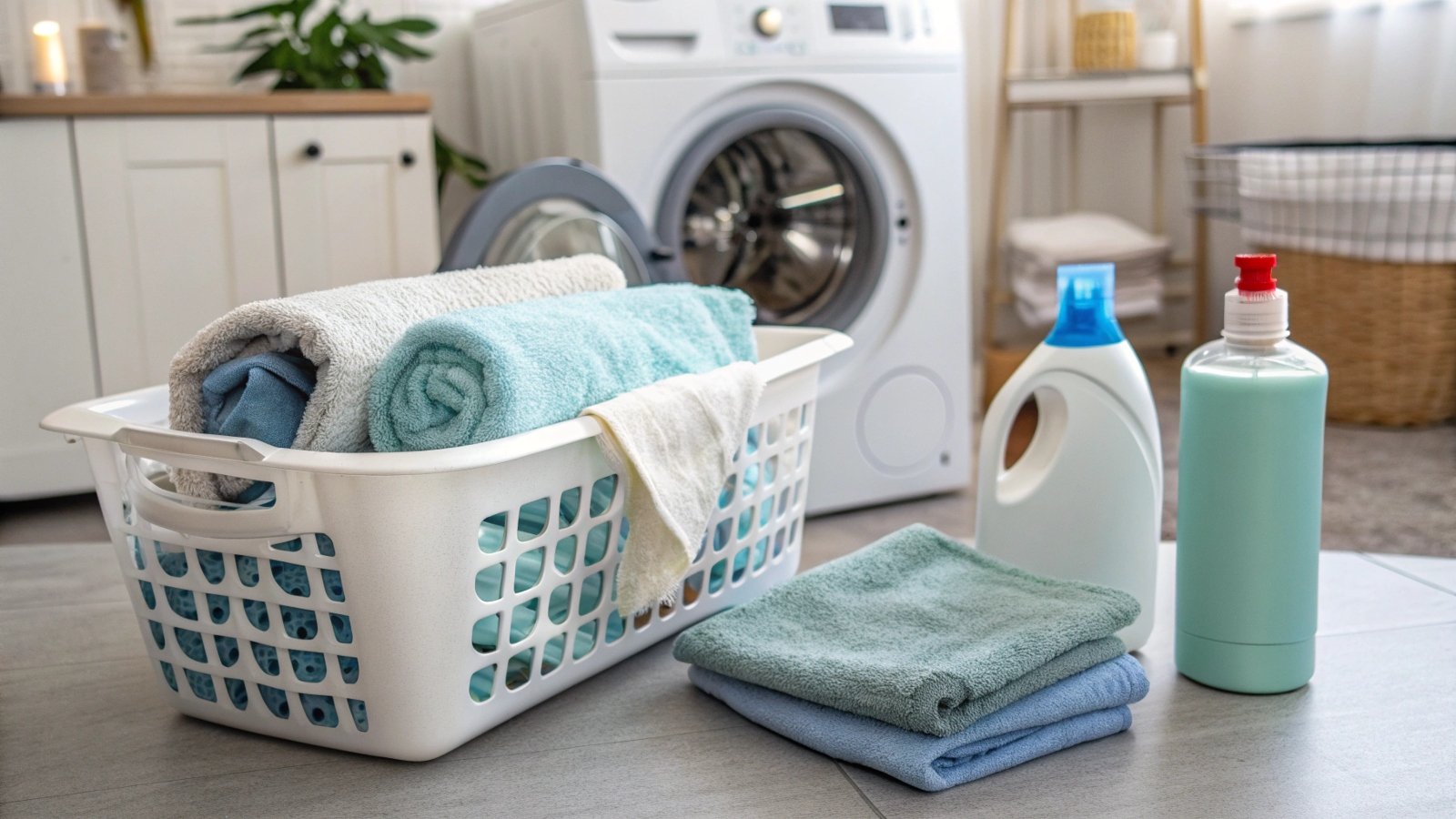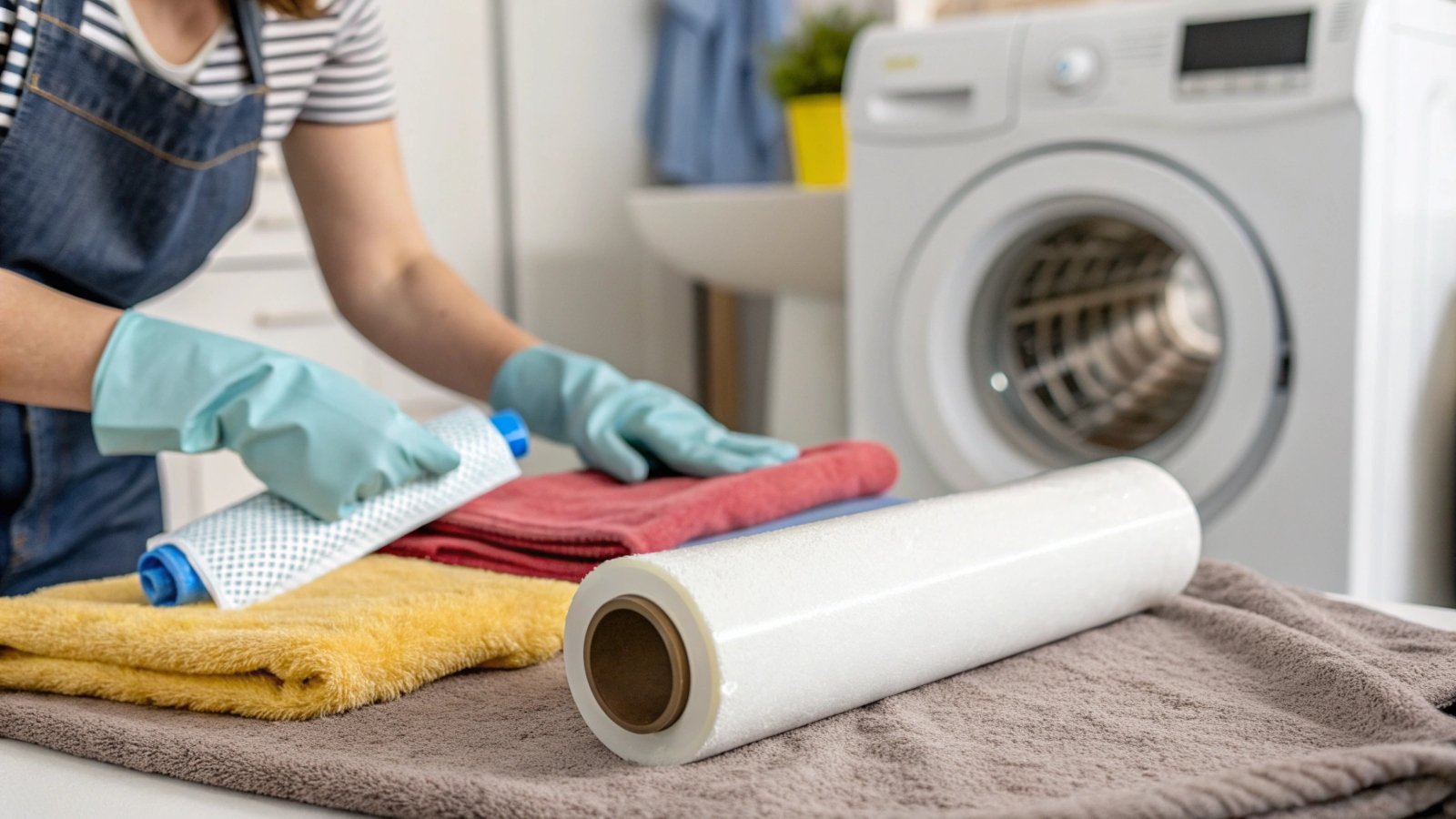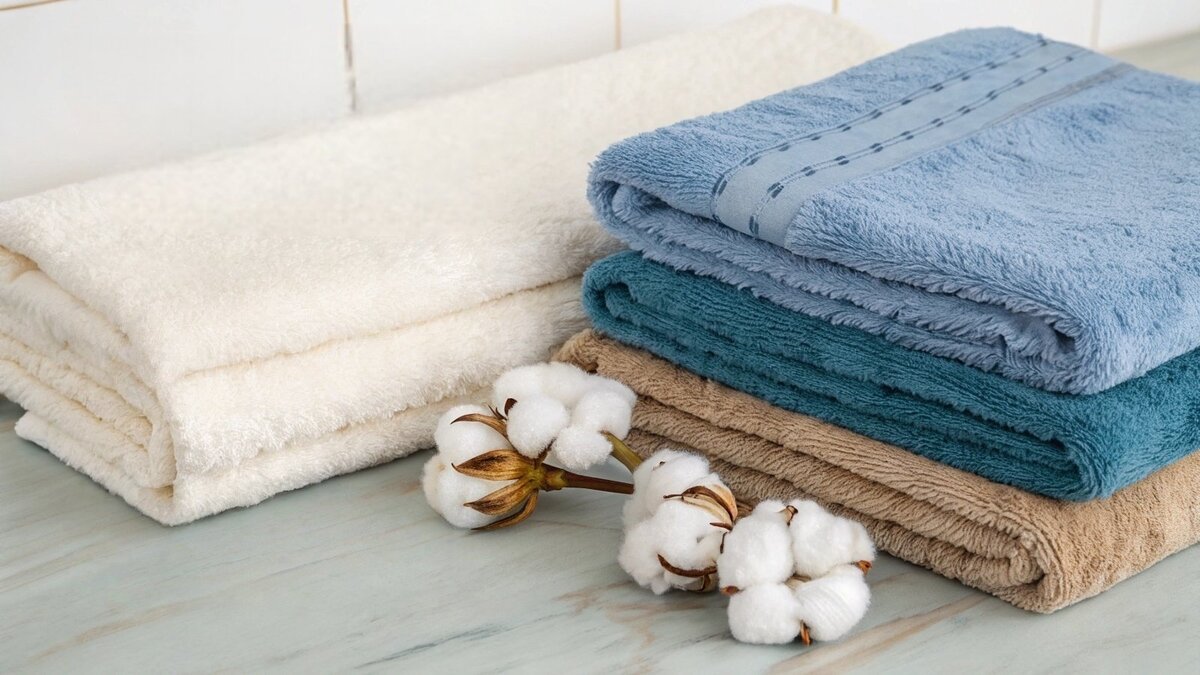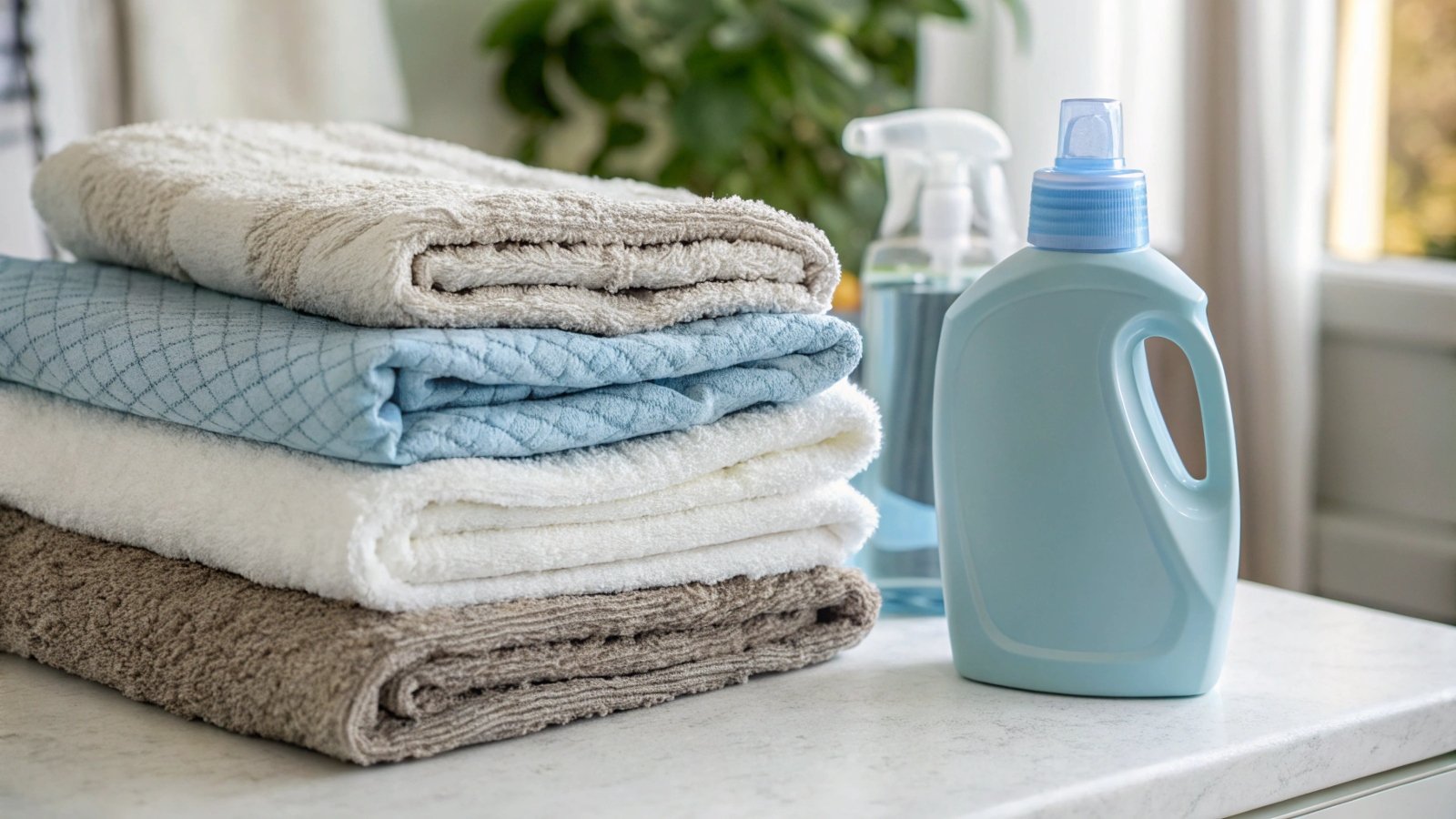Are your microfiber towels leaving frustrating lint behind? This ruins their cleaning power and looks unprofessional. Here’s how to fix it and restore their premium feel for good.
To remove lint, wash your microfiber towels separately using a specialized detergent and cool water. For stubborn fuzz, use a lint roller or sticky tape. Tumble drying on a no-heat air-fluff cycle can also effectively shake loose and collect lint in the machine’s filter.
Now that you have the quick fix, it helps to understand why it happens in the first place. For any business decision-maker or purchasing manager I work with, I always stress that knowing the ‘why’ is just as important as the ‘how’. It’s the key to maintaining quality and protecting your brand’s reputation. Let’s dive deeper into the specific methods and preventative measures to ensure your microfiber towels perform perfectly every time, from the first use to the last.
How to get fuzz off of microfiber towels?
Notice stubborn fuzz clinging to your microfiber towels after a wash? This debris compromises their cleaning ability. I’ll share some simple, effective tricks to remove it completely.
For quick removal, use a high-quality lint roller or sticky packing tape. A surprisingly effective method is to wear a damp rubber glove and wipe the towel; the friction will ball up the fuzz. These are quick fixes, but proper washing is the ultimate long-term solution.
When you need to get fuzz off a towel right now, you have a few great options. Each method works a bit differently and is suited for specific situations. I’ve used all of these in a pinch, both at home and during quality control checks at our facility. The lint roller or heavy-duty packing tape is your fastest solution for loose surface lint. The adhesive simply pulls the fuzz right off. For more embedded fuzz, the damp rubber glove trick works wonders. As you wipe the towel, the friction and static from the rubber act like a magnet, pulling lint out and balling it up for easy disposal. Finally, don’t underestimate a vigorous shake outdoors. This can dislodge a surprising amount of loose debris before it ever goes into the wash.
| Method | Best For | Pros | Cons |
|---|---|---|---|
| Lint Roller/Tape | Quick spot treatments | Fast, easy | Creates waste (sheets), less effective on deep lint |
| Damp Rubber Glove | Embedded fuzz & pilling | Reusable, highly effective | Requires more manual effort |
| Vigorous Shake | Loose debris before washing | No tools needed, fast | Only removes loose particles |
Why are my microfiber towels leaving lint?
Confused why your premium microfiber towels are shedding lint? This can make you doubt your product’s quality. I’ll pinpoint the exact causes, from production to your washing machine.
Microfiber leaves lint for two main reasons: improper washing or inferior quality. Washing with cotton items, using fabric softeners, or drying with high heat damages the delicate fibers. Additionally, poorly constructed towels with shorter, weaker fibers are naturally prone to breaking and shedding.
In my years in the textile industry, I’ve seen that linting issues almost always trace back to one of three culprits. Understanding them is key to solving the problem for good.
Contamination in the Wash
Microfiber is designed to be a magnet for dust, dirt, and, unfortunately, lint. When you wash microfiber towels with cotton items like t-shirts or bath towels, the microfiber grabs onto the shedding cotton fibers. Then, when you use the towel, it deposits that cotton lint onto your car or windows. The towel itself isn’t shedding; it’s releasing the lint it collected.
Damage from Heat and Chemicals
The fibers in microfiber are a type of plastic (polyester and polyamide). High heat from a dryer or hot water wash can literally melt them. This makes the fibers stiff, brittle, and useless for cleaning. It also causes them to break and shed. Similarly, fabric softeners are the enemy of microfiber. They are designed to leave a waxy coating, which clogs the microscopic structure of the fibers and destroys their static charge and absorbency.
Manufacturing Quality
From a manufacturer’s standpoint, this is crucial. High-grade microfiber is made from long, continuous, split filaments that are strong and don’t break easily. Cheaper versions often use shorter, lower-quality fibers that can break and shed from day one. At TowelTrend, we specify A-grade yarn for all our clients to prevent this. A high GSM (grams per square meter) is nice, but the quality of the fiber itself is what truly guarantees a lint-free, durable towel.
How to get debris out of microfiber cloths?
Are your microfiber cloths filled with grit and debris? Using them now risks scratching surfaces, causing costly damage. I’ll show you how to safely deep clean them.
First, shake the cloth vigorously outdoors. For embedded particles, pre-soak it in a bucket with microfiber detergent, agitating the water to dislodge grit. For tough, non-delicate cloths, a gentle rinse with a hose can force out heavy debris before washing.
When a microfiber cloth has picked up heavy debris like sand or grit, a standard wash isn’t enough and can even damage your washing machine. You need to take extra steps to ensure the cloth is safe to use again.
The Pre-Soak Method
This is the safest and most effective technique. Fill a bucket with warm—never hot—water and add a small amount of microfiber-specific detergent. Submerge the dirty cloths and let them soak for at least an hour, or even overnight for heavily soiled items. The detergent will help break the electrostatic bond between the fibers and the debris. Periodically agitate the cloths by hand. You’ll see the debris settle at the bottom of the bucket. After soaking, rinse them thoroughly before putting them through a proper machine wash cycle.
When to Retire a Cloth
As a business owner, you have to weigh the cost versus the risk. I always advise my clients, especially those in auto detailing, to have a clear protocol for retiring cloths. If a towel was used to clean up metal shavings, heavy grease, or other abrasive compounds, it’s often not worth the risk to try and salvage it. A $2 cloth is not worth a $1000 paint correction job. When in doubt, throw it out or relegate it to non-delicate tasks like cleaning tires.
How to keep microfiber lint free?
Tired of constantly de-linting your microfiber towels? This extra work costs time and reflects poorly on your standards. I’ll give you a simple, foolproof washing protocol.
To keep microfiber lint-free, establish a strict washing routine. Wash them only with other microfiber items. Use a special microfiber detergent in cool water. Never use fabric softener or bleach. Tumble dry on a low or no-heat setting, or simply let them air dry.
Prevention is always the best strategy. Keeping your microfiber towels lint-free from the start comes down to a disciplined and consistent laundry process. This is the exact advice I give to brands that source towels from us, as proper care ensures their product maintains its premium quality for their end-users.
The Ideal Washing Protocol
Follow these steps every time, and you will eliminate lint issues. It’s a simple system that makes a huge difference in the performance and longevity of your towels.
| Step | Action | Why it Matters |
|---|---|---|
| 1. Separate | Wash microfiber ONLY with other microfiber. No cotton. | Prevents contamination from other fabrics that shed lint. |
| 2. Detergent | Use a liquid detergent free of dyes, perfumes, or softeners. | Fabric softeners clog fibers; powders can fail to dissolve. |
| 3. Temperature | Use cool or warm water, max 40°C / 104°F. | Hot water will permanently melt and damage the fine fibers. |
| 4. Dry | Tumble dry on low/no heat, or hang to air dry. | High heat is the #1 cause of fiber damage and shedding. |
Storage Best Practices
How you store your towels is the final step. After we complete a production run, we immediately pack the finished towels into sealed bags and cartons. This prevents any contamination before they even ship. You should adopt a similar mindset. Once clean and dry, store your microfiber towels in a clean, covered plastic bin or a sealed bag. This keeps them away from open-air dust and ensures they are pristine and ready for professional use when you need them.
Conclusion
Preventing lint is simple: wash microfiber separately, avoid heat and fabric softeners, and use proper techniques. Follow these rules, and your towels will remain effective and professional for years.











